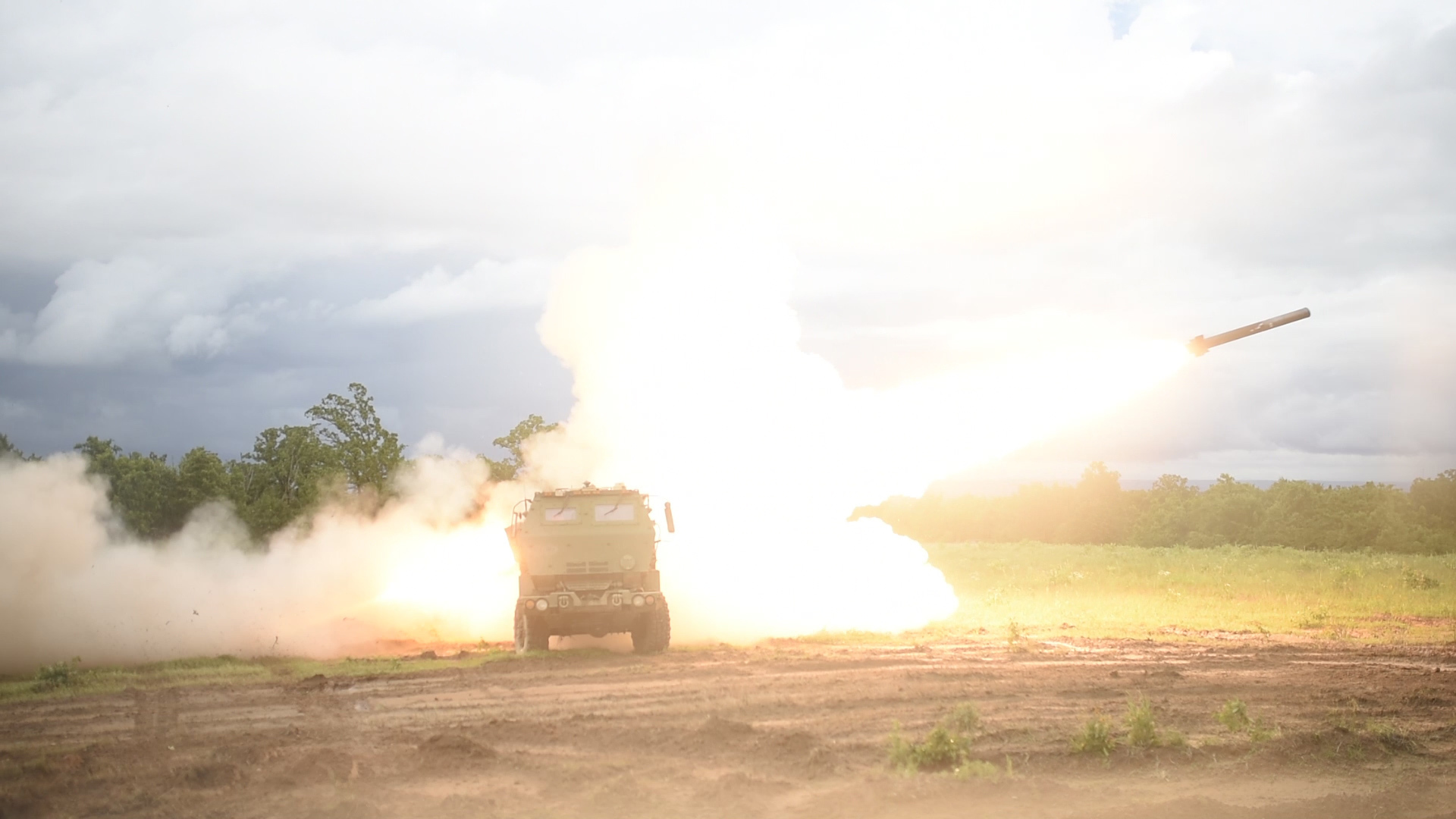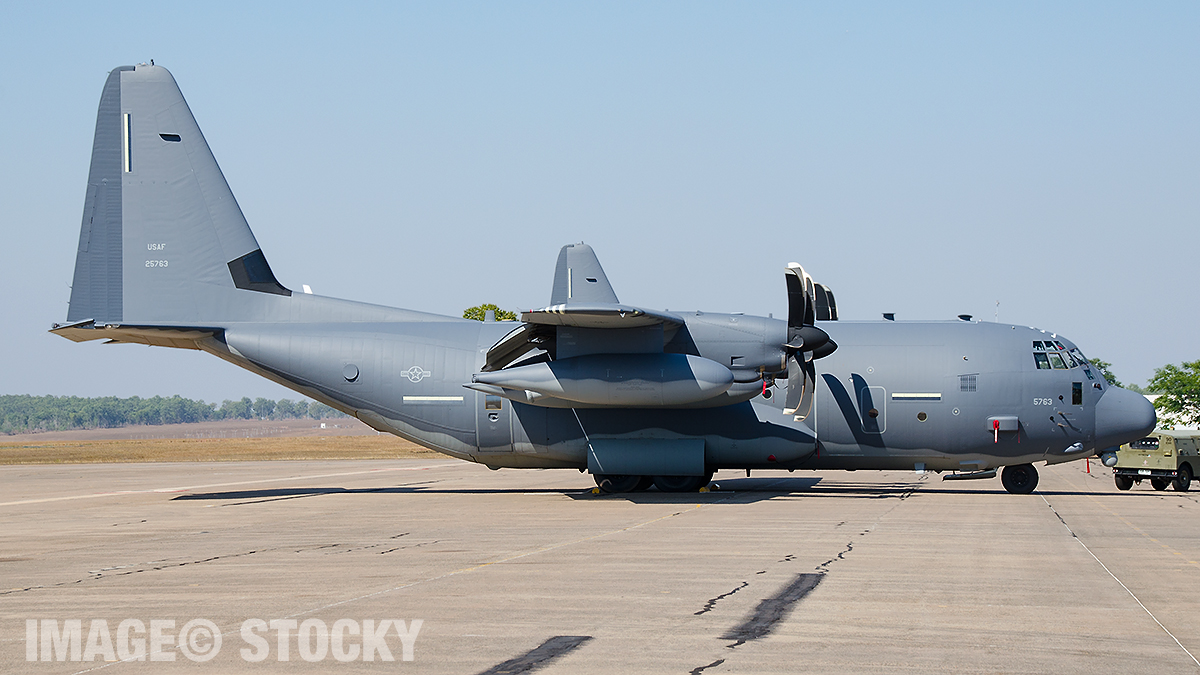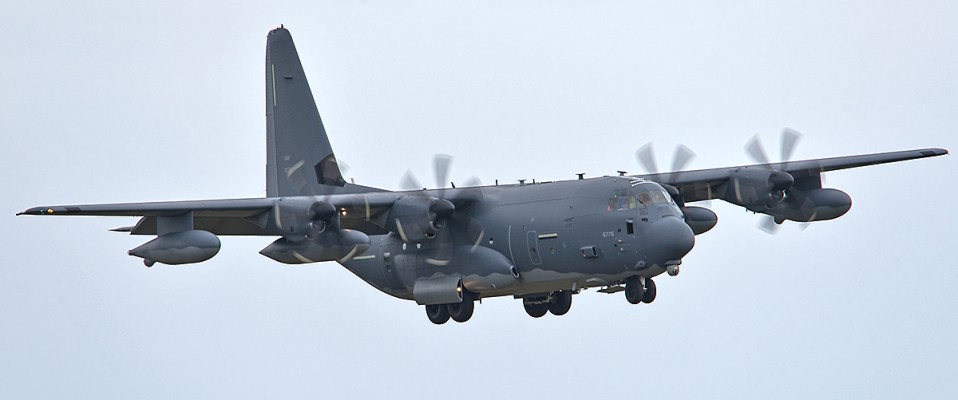BRINGING THE RAIN!
U.S. and Australian Forces combine to showcase High Mobility Artillery Rocket System in Exercise Talisman Sabre 2019
Report by Jaryd Stock
Photos by Jaryd Stock (others as noted)
July 8, 2019
U.S. Forces are conducting a first for Talisman Sabre highlighting their High Mobility Artillery Rocket System (HIMARS) Rapid Infiltration (HIRAIN) training technique in the Shoalwater Bay Training Area in Queensland Australia, during Exercise Talisman Sabre 2019.
The U.S. and Australian bi-lateral training Exercise Talisman Sabre 19 provides an opportunity to increase interoperability and sustain readiness for the five participating countries of Talisman Sabre 19.
Today’s mission included a HIRAIN mission with units from the United States Airforce, United States Marine Corps and United States Army assets combining to effectively carry out assigned tasks and to keep fictional enemy Red forces second guessing every move made by the offensive Blue force.
HIRAIN is when 12-tonne HIMARS a 6 wheeled artillery system utilised by the United States Marines are flown in by C-130 Hercules aircraft to a forward deployed Landing Strip close to a contested battle space, then unloaded by Hercules loadmasters and support personnel to rapidly conduct a fire mission, then afterwards reloaded on to the Hercules and then flown out and relocated to follow on objectives and await new orders in separate area far from where they were initially. This minimises the opportunity of detection and counter fire missions against the system.

In this exercise Marines from 3rd Marine Division loaded two HIMARS on to two U.S. Air Force MC-130J Commando II 18th Special Operations Squadron assigned to 353rd Special Operations Group based at Kadena AFB in Japan, and soldiers from the U.S. Army’s Multi Domain Task Force from 2nd Infantry Division loaded two HIMARS onto two U.S. Marine Corps KC-130J Super Hercules assigned to Marine Aerial Refueler Transport Squadron VMGR-152 “Sumo’s” from Marine Corps Air Station Iwakuni.
The team of Marines, soldiers, and airmen demonstrated the HIRAIN capability to their Australian Defence Force counterparts.
“The capability that the artillery and the Marine Corps gains through HIRAIN is invaluable,” said U.S. Marine Corps Master Sgt. David R. Morgan, Field Artillery Chief, Q Battery, 3rd Battalion, 12th Marines, 3rd Marine Division. “It allows all areas of the Marine Air-Ground Task Force to assist in timely and accurate fires that will help defeat all future enemies. It is a chance for us to actively get involved with them, to learn from them, and a chance for us to grow as a unified force ready to respond to any crisis.”
Rehearsing rapid employment tactics and techniques offers the forces an occasion to better understand the procedures each force uses to accomplish the same mission working together as a team.
Combined with other new tactics and new rockets, HIRAIN could allow U.S. and allied forces to quickly position long-range artillery, frustrating an enemy’s own movements and establishing quick control of contested battle ground.

Artillerymen with the 1st Battalion, 158th Field Artillery Regiment, 45th Field Artillery Brigade, Oklahoma Army National Guard, fire their High Mobility Artillery Rocket System (HIMARS) during a live five exercise at Fort Chaffee, Arkansas, June 6, 2019. The 45th FAB, along with the support of 90th Troop Command, is participating in the annual Western Strike exercise as part of the unit’s two-week annual training. (Oklahoma Army National Guard photo by Sgt. Jordan Sivayavirojna)
“What we are demonstrating is the capability of the U.S. Marine Corps, U.S. Air Force, and U.S. Army to come together with different aircrews and different HIMARS units, quickly build a plan, deploy on C-130s, travel great distances by air, land rapidly deliver long range precision fires against enemy targets, and depart their firing location prior to detection, said U.S. Army Maj. Daniel Graw, Division Assistant Fire Support Coordinator, 3d Marine Division.
Interoperability was also showcased in the mission today with Royal Australian Airforce assets including a P-8A Poseidon from 11 Squadron and a E-7A Wedgetail AWE&C aircraft acting as the C2 (Command and Control) piece guiding in MC-130 and KC-130
Hercules aircraft into the landing strip being guided in by Royal Australian Navy and Australian Army pre-landing force operators providing intel from the ground.
The purpose of Talisman Sabre is to improve Australian-U.S. combat readiness and interoperability, maximise combined training opportunities and conduct maritime prepositioning and logistics operations. Exercises like this better prepare Australia and the U.S. for future conflict by fully integrating all domains of warfare (air, land, maritime, space and information).




Jaryd Stock is based in Sydney Australia. He has been a die-hard aviation enthusiast from a young age when he was chauffeured around by his father to various airshows and airports around Australia. At his first Airshow he witnessed the awesomeness of a General Dynamics F-111C and immediately fell in love with aviation.
Jaryd picked up a camera at a young age and has never looked back. He now combines photography and writing to highlight “Downunder” aviation; especially U.S. DoD units. Jaryd uses Nikon cameras and lenses.


